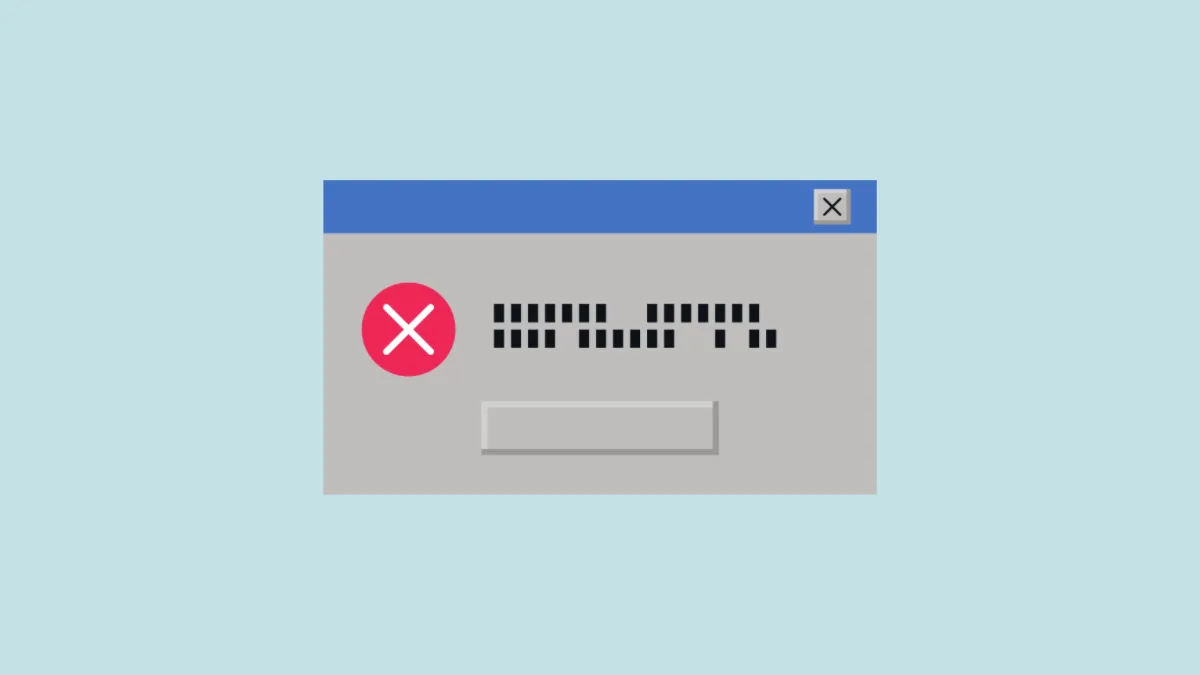Google Chrome is widely recognized as one of the most popular web browsers, offering seamless integration with various Google services like Gmail, YouTube, and Google Drive. However, despite its widespread use and robust features, users may occasionally encounter issues where Chrome becomes unresponsive, freezes, or crashes altogether. This can manifest in error messages such as "Google Chrome has stopped working," "Google Chrome is not responding," or "Aw snap! Something went wrong while displaying a webpage."
Causes of Chrome Not Responding Issues
There are several factors that can lead to Chrome not functioning properly on Windows 11. Understanding these can help in troubleshooting the problem effectively. Some common causes include:
- Overloading the browser with multiple tabs or windows.
- Faulty or excessive extensions installed.
- Insufficient system memory (RAM).
- Accumulation of temporary files like cache and cookies.
- Malware or viruses affecting browser performance.
- Incorrect proxy settings.
- Corrupted browser files or bugs in the software.
- Outdated Chrome or Windows versions.
Disable or Remove Chrome Extensions and Apps
One of the primary reasons for Chrome becoming unresponsive is malfunctioning or malicious extensions. Extensions are third-party tools that enhance browser functionality, but they can sometimes interfere with Chrome's performance. Disabling or removing unnecessary or problematic extensions can often resolve the issue.
Disabling Chrome Extensions
Step 1: Open Google Chrome and click on the three vertical dots in the upper-right corner of the window. Hover over More Tools and select Extensions. Alternatively, you can type chrome://extensions/ in the address bar and press Enter.
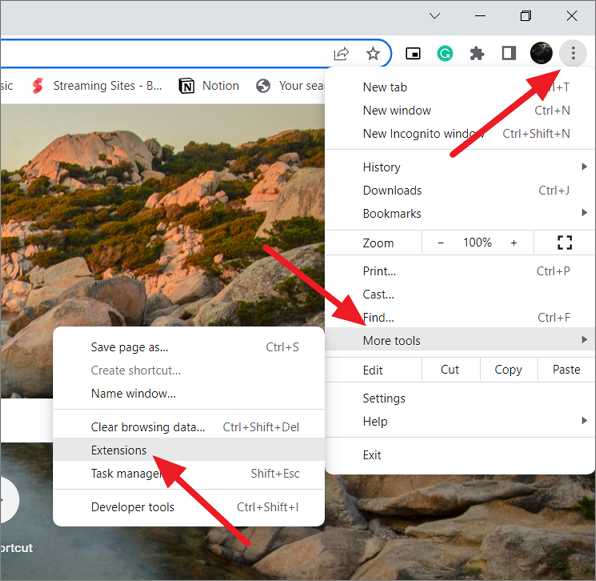
Step 2: In the Extensions page, you'll see all the extensions installed on your browser. Identify any extensions that you suspect might be causing issues or those you no longer need. Toggle off the switch beneath each extension to disable it (a gray toggle indicates the extension is disabled).
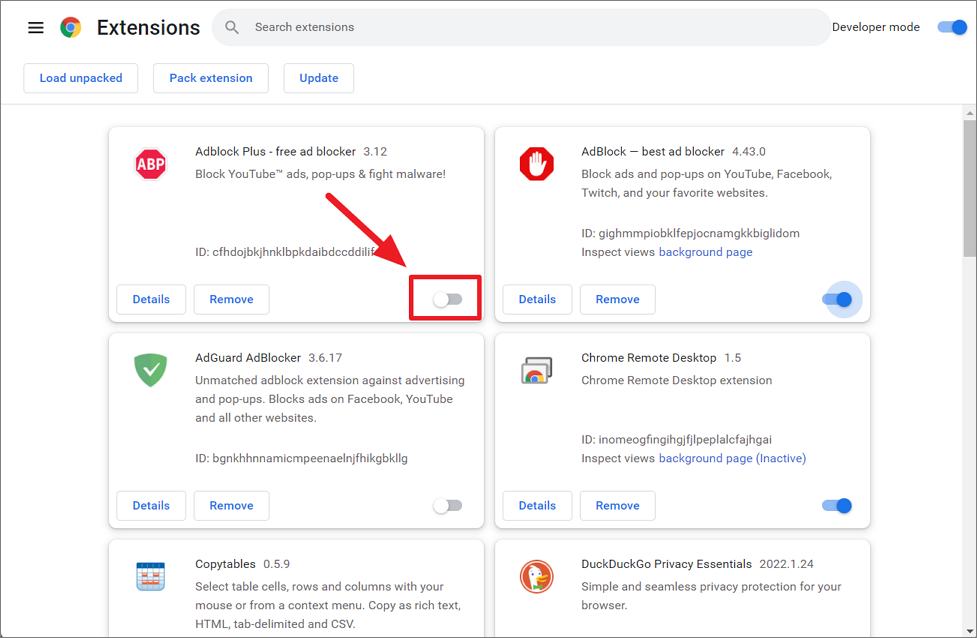
Step 3: To remove an extension entirely, click on the Remove button associated with the extension and confirm by clicking Remove in the pop-up dialog.
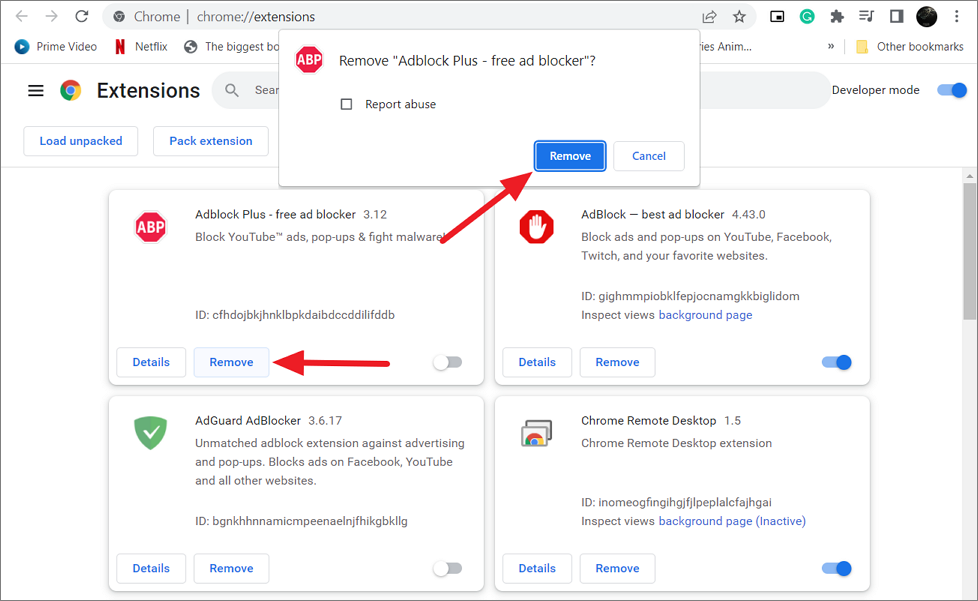
Step 4: Restart Chrome and observe if the performance has improved.
Removing Chrome Apps
Step 1: In Chrome's address bar, type chrome://apps/ and press Enter.
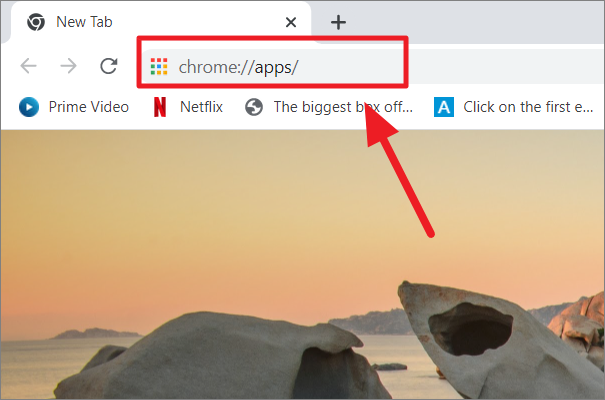
Step 2: Right-click on any app you wish to remove and select Remove from Chrome....

Step 3: Confirm the action by clicking Remove in the confirmation dialog. If you believe the app is malicious, you can check the Report abuse option before removing it.
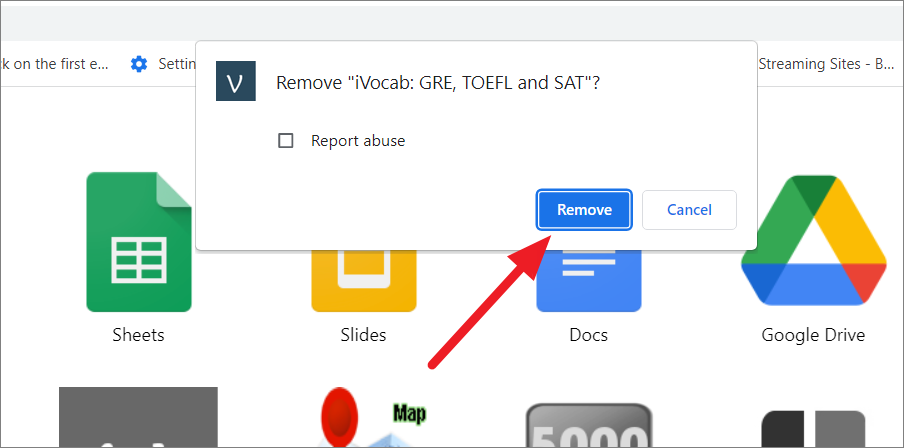
Clear Browsing Data, Cache, and Cookies
Over time, Chrome accumulates browsing data, cache, and cookies, which can slow down the browser and cause it to become unresponsive. Clearing this data can help improve performance.
Step 1: Open Chrome and click on the three vertical dots in the top-right corner. Select Settings.

Step 2: In the Settings menu, click on Privacy and security on the left sidebar. Then, select Clear browsing data on the right pane.
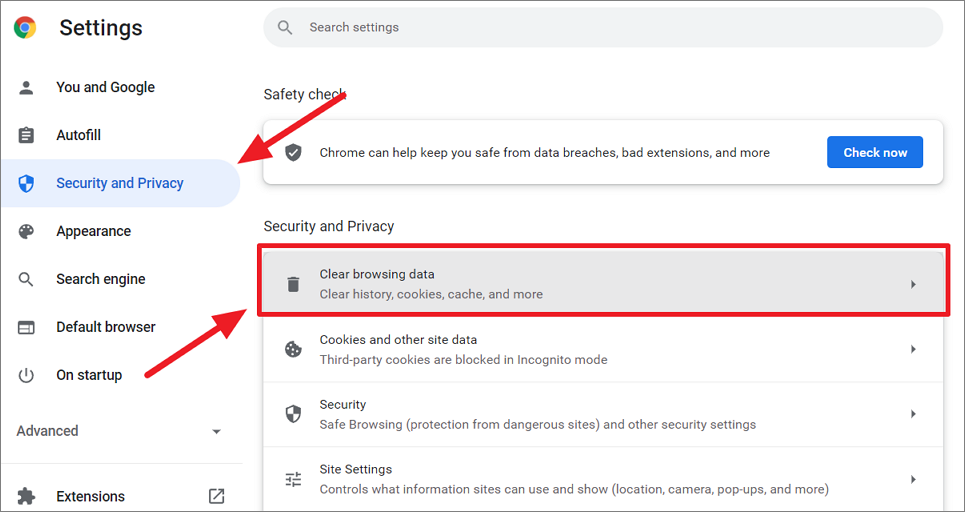
Alternatively, you can directly navigate to this page by typing chrome://settings/clearBrowserData in the address bar.
Step 3: In the Clear browsing data window, select All time from the time range dropdown to delete all data. Check the boxes for Browsing history, Cookies and other site data, and Cached images and files.

Step 4: Click on Clear data to proceed. Once the data is cleared, restart Chrome to see if the issue persists.
Update Google Chrome
Using an outdated version of Chrome can lead to performance issues and compatibility problems. Updating Chrome ensures you have the latest fixes and improvements.
Step 1: Open Chrome and click on the three vertical dots in the upper-right corner. Hover over Help and select About Google Chrome.
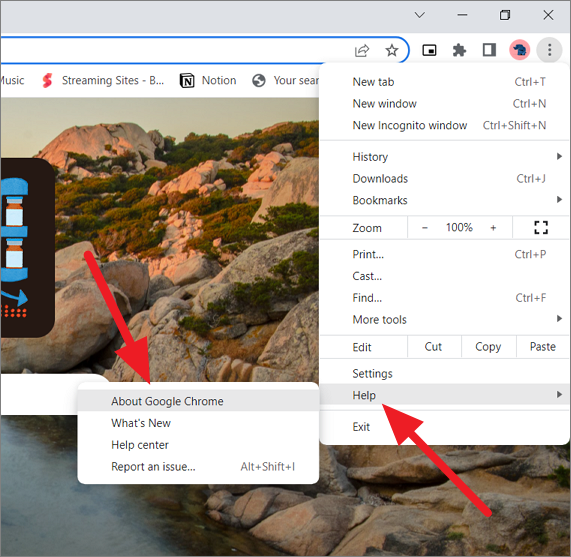
Step 2: Chrome will automatically check for updates and install them if available. Once the update is complete, click on Relaunch to restart Chrome with the latest version.
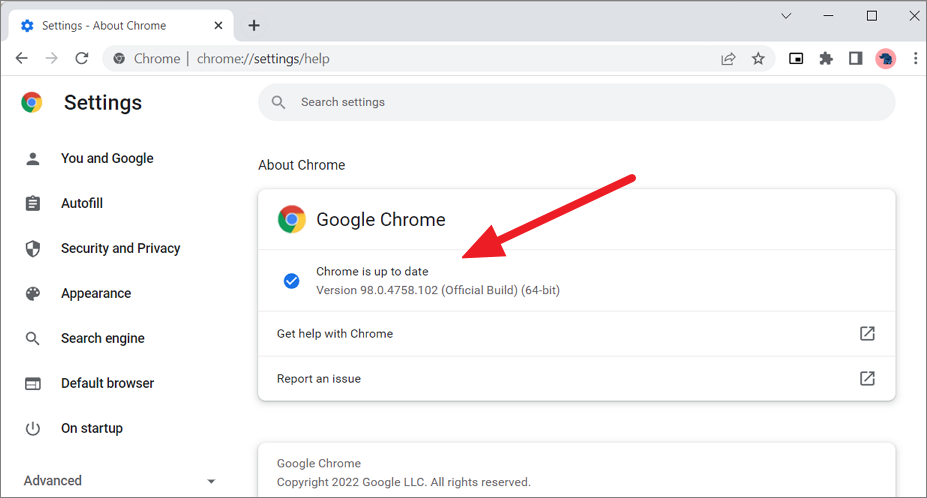
Ensuring Chrome is up to date can resolve many issues related to performance and security.
Kill All Chrome Processes and Relaunch the Browser
Sometimes, Chrome processes running in the background can cause the browser to become unresponsive, especially if they have crashed or are consuming excessive resources. Terminating these processes and restarting Chrome can help.
Step 1: Press Ctrl + Shift + Esc to open the Task Manager. Alternatively, right-click on the Start menu and select Task Manager.
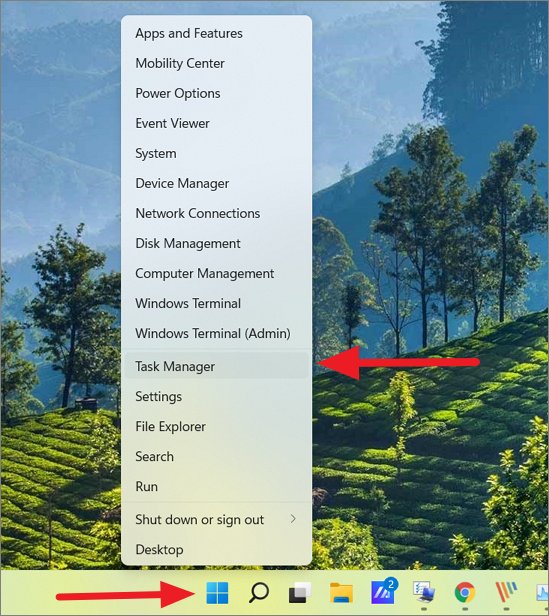
Step 2: In the Task Manager, locate any running instances of Google Chrome under the Apps and Background processes sections.
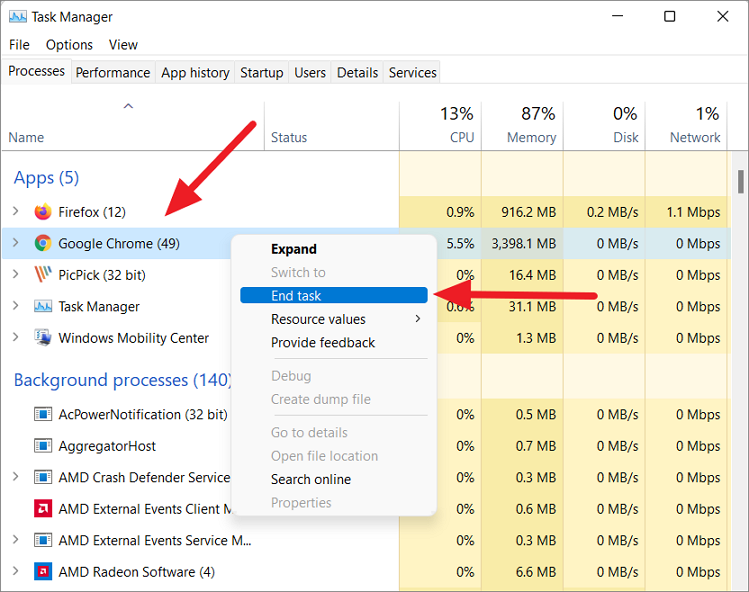
Step 3: Right-click on Google Chrome and select End task to terminate the process. Repeat this for all Chrome processes to ensure none are left running.
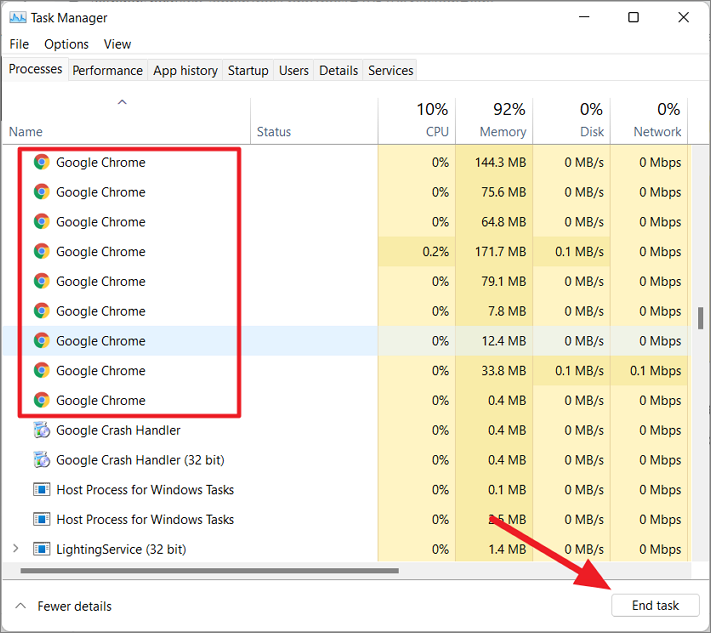
Step 4: Relaunch Chrome and check if it is functioning correctly.
Restart Your Computer
A simple restart can resolve many software glitches by clearing the system memory and resetting processes. This can be especially helpful if Chrome's issues are due to limited system resources or conflicts with other applications.
Step 1: Click on the Start menu, select the Power icon, and choose Restart.
Step 2: Once your computer restarts, open Chrome to see if the problem has been resolved.
Use Chrome's Task Manager to End Processes
Chrome has its own Task Manager that allows you to monitor and manage tabs, extensions, and processes. This can help identify any resource-intensive tasks that may be causing Chrome to freeze or crash.
Step 1: Open Chrome and press Shift + Esc to open the Chrome Task Manager. You can also access it by clicking on the three vertical dots, selecting More Tools, and choosing Task Manager.
Step 2: In the Chrome Task Manager, review the list of running tasks. Click on any task that is using excessive resources or is not responding.

Step 3: Click on End process to terminate the selected task. This can help free up resources and stabilize Chrome.
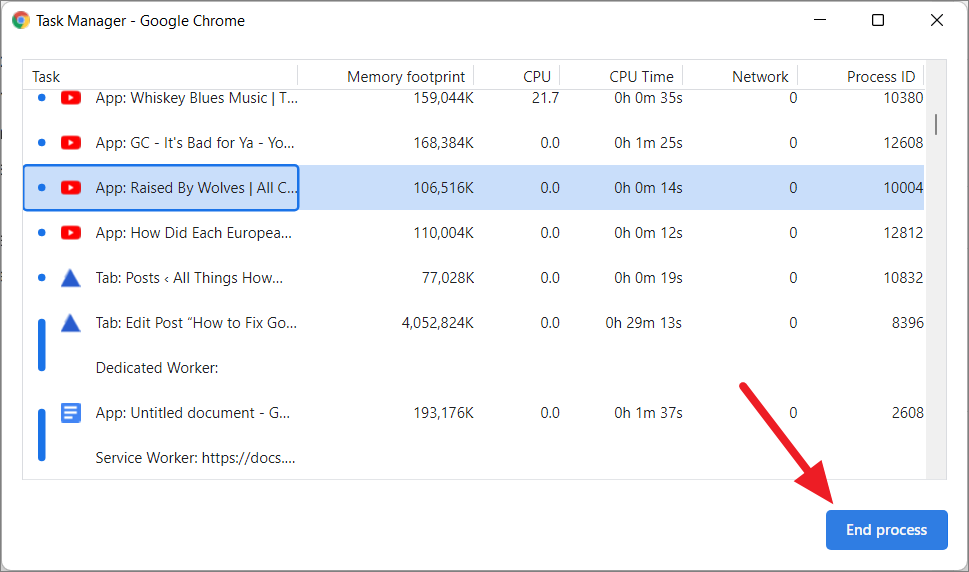
Clean Up Computer with Chrome's Built-in Tool
Chrome provides a built-in tool that scans for harmful software that might interfere with the browser's operation. Using this tool can help identify and remove malware affecting Chrome.
Step 1: Open Chrome and navigate to chrome://settings/cleanup or click on the three vertical dots, select Settings, click on Advanced on the left sidebar, choose Reset and clean up, and then select Clean up computer.
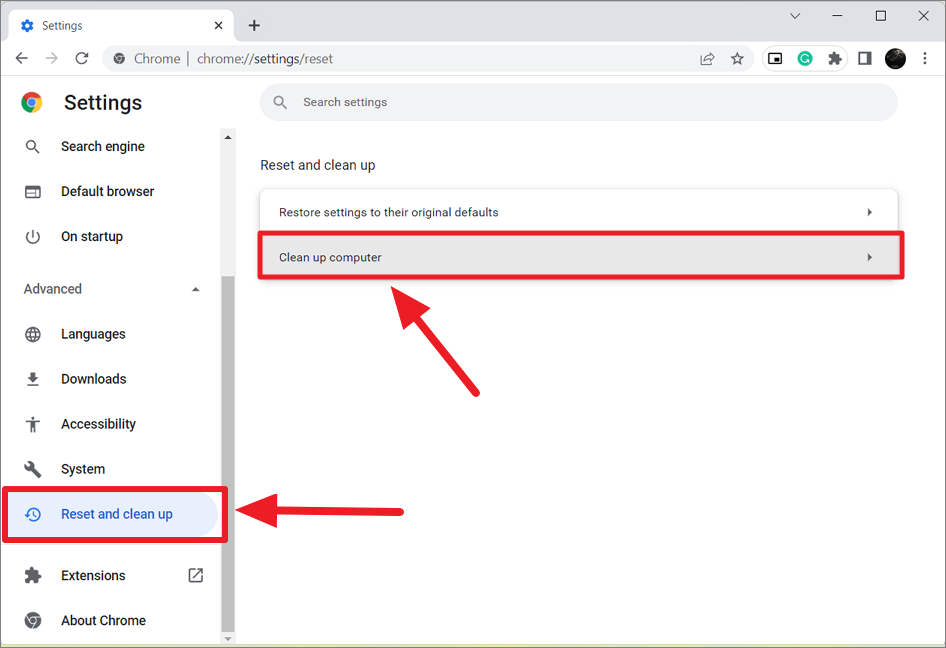
Step 2: Click on the Find button to initiate the scan for harmful software.
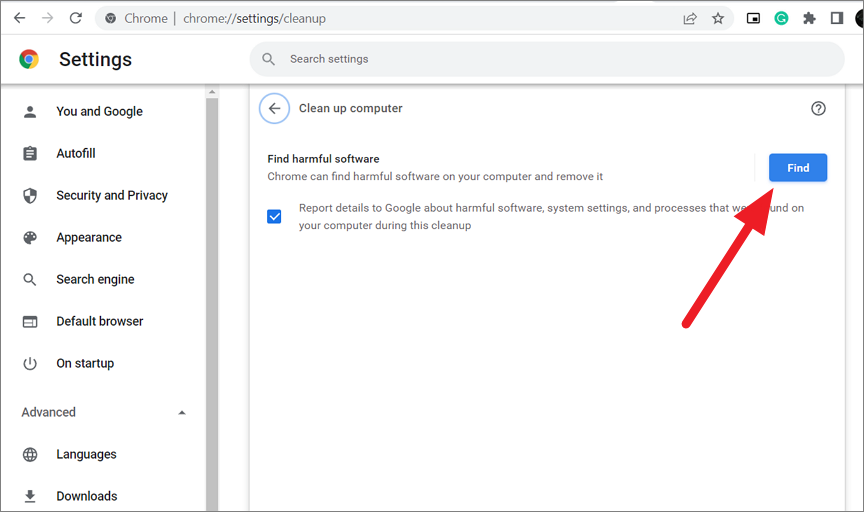
Step 3: If any harmful software is detected, follow the prompts to remove it. After the process is complete, restart Chrome to see if the issue is resolved.
Disable Antivirus Software Temporarily
Sometimes, third-party antivirus programs can interfere with Chrome's processes, mistaking them for potential threats. Temporarily disabling your antivirus software can help determine if it's causing the issue.
Step 1: Locate your antivirus program's icon in the system tray (usually at the bottom-right corner of the screen). Right-click on the icon and select the option to disable or pause protection temporarily.
Step 2: Specify the duration (e.g., 10 minutes) and confirm. Note that the steps may vary depending on the antivirus software you are using.
Step 3: Launch Chrome and check if it is working properly. If so, consider adding Chrome to your antivirus's exception list or adjusting its settings.
Run System File Checker (SFC) Scan
Corrupted or missing system files can cause applications like Chrome to malfunction. Running an SFC scan can detect and repair these files.
Step 1: Click on the Start menu, type cmd, right-click on Command Prompt, and select Run as administrator.

Step 2: In the Command Prompt window, type the following command and press Enter:
sfc /scannowStep 3: Wait for the scan to complete. It may take some time. If any issues are found, the tool will attempt to repair them.

Step 4: After the process is finished, restart your computer and check if Chrome is functioning correctly.
Run DISM Commands
The Deployment Image Servicing and Management (DISM) tool can fix deeper issues within the Windows system image, which might be affecting Chrome's performance.
Step 1: Open Command Prompt as an administrator as described in the previous method.
Step 2: Execute the following commands one by one, pressing Enter after each:
DISM.exe /Online /Cleanup-image /scanhealthDISM.exe /Online /Cleanup-image /Restorehealth
Step 3: Wait for the commands to complete, which may take several minutes. Once done, restart your computer and test Chrome.
Delete the User Profile Folder
Corrupted user profiles can cause Chrome to behave unexpectedly. Deleting or renaming the default user profile folder can force Chrome to create a new profile, potentially resolving the issue.
Step 1: Close Chrome completely. Open the Run dialog by pressing Windows + R, type the following path, and press Enter:
%USERPROFILE%\AppData\Local\Google\Chrome\User Data
Step 2: Locate the folder named Default. Right-click on it and select Rename. Change the name to something like Default.old.
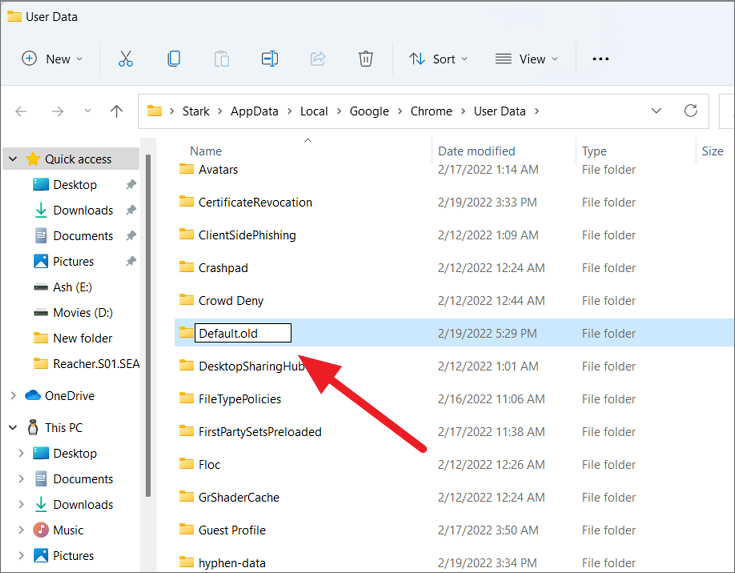
Step 3: Restart your computer and open Chrome. A new default profile will be created automatically.
Reset Google Chrome to Default Settings
Resetting Chrome can resolve issues caused by incorrect settings or configurations. This action will restore Chrome to its original state, but your bookmarks, history, and saved passwords will remain intact if synced with your Google account.
Step 1: Open Chrome, click on the three vertical dots, and select Settings.
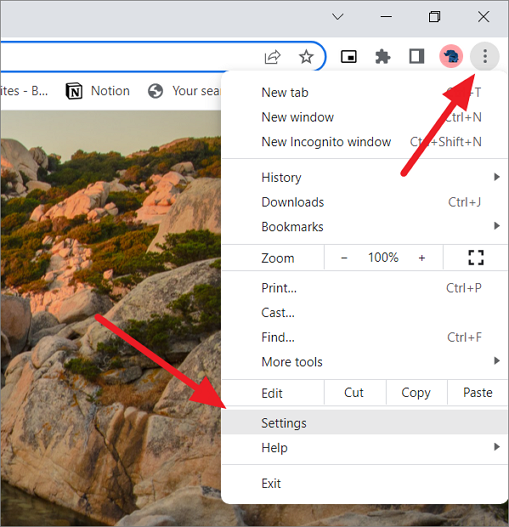
Step 2: On the left sidebar, click on Advanced to expand the menu, then select Reset and clean up.

Step 3: Click on Restore settings to their original defaults.
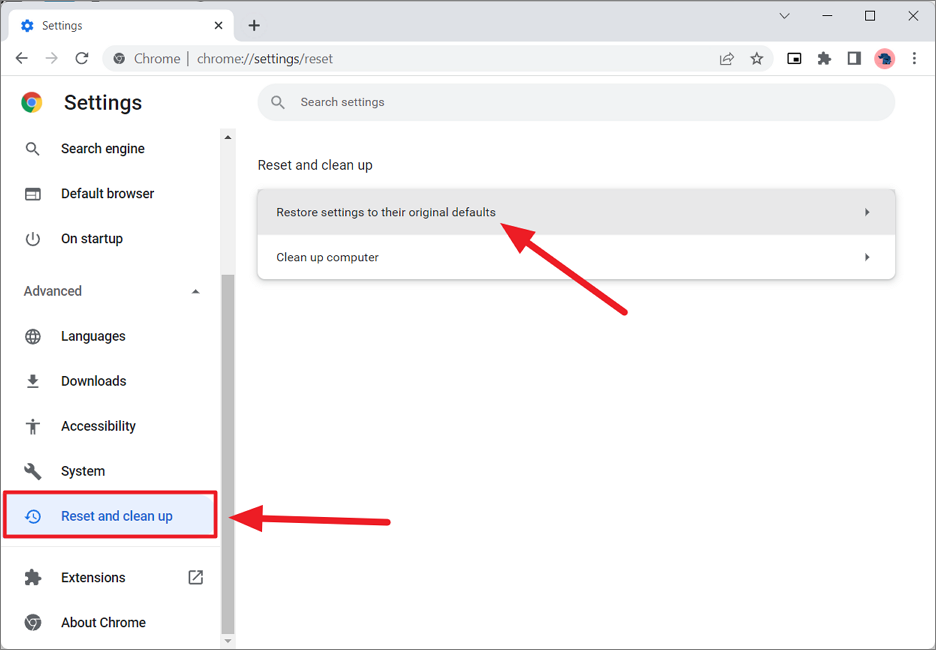
Step 4: In the confirmation dialog, click on Reset settings to proceed.
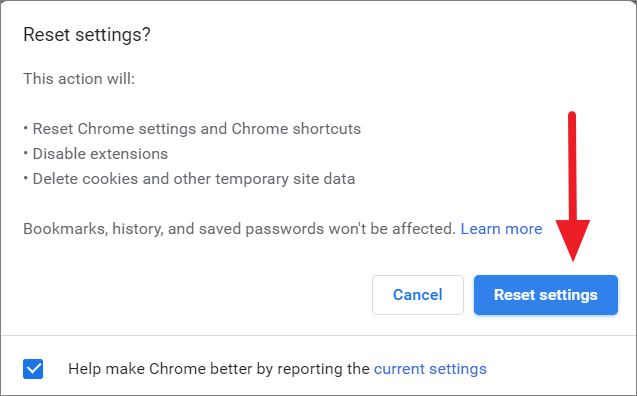
Step 5: Restart Chrome and check if it is working properly.
Allow Chrome Through Windows Defender Firewall
Windows Defender Firewall may sometimes block Chrome, preventing it from accessing the internet or functioning correctly. Allowing Chrome through the firewall can resolve connectivity issues.
Step 1: Click on the Start menu, type Windows Firewall, and select Windows Defender Firewall from the search results.
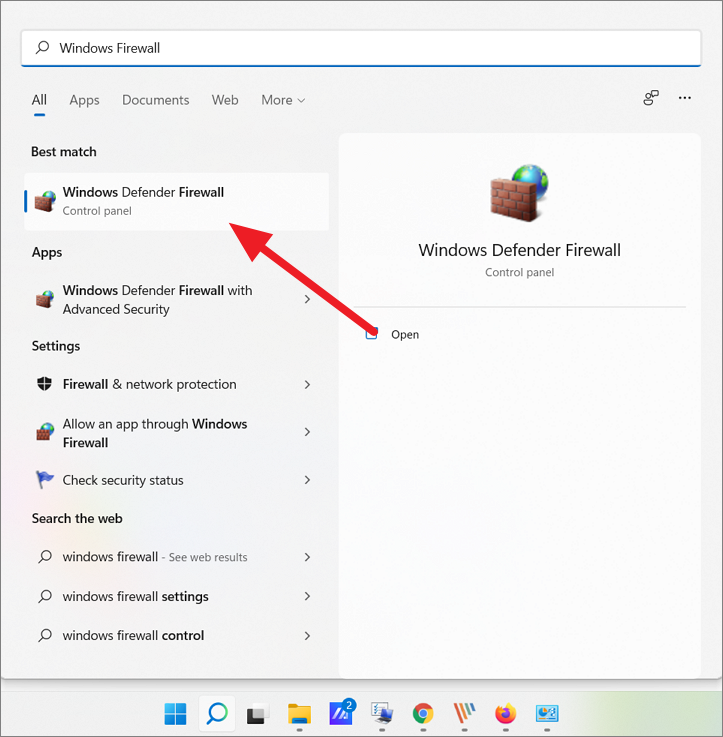
Step 2: In the Firewall settings, click on Allow an app or feature through Windows Defender Firewall on the left sidebar.
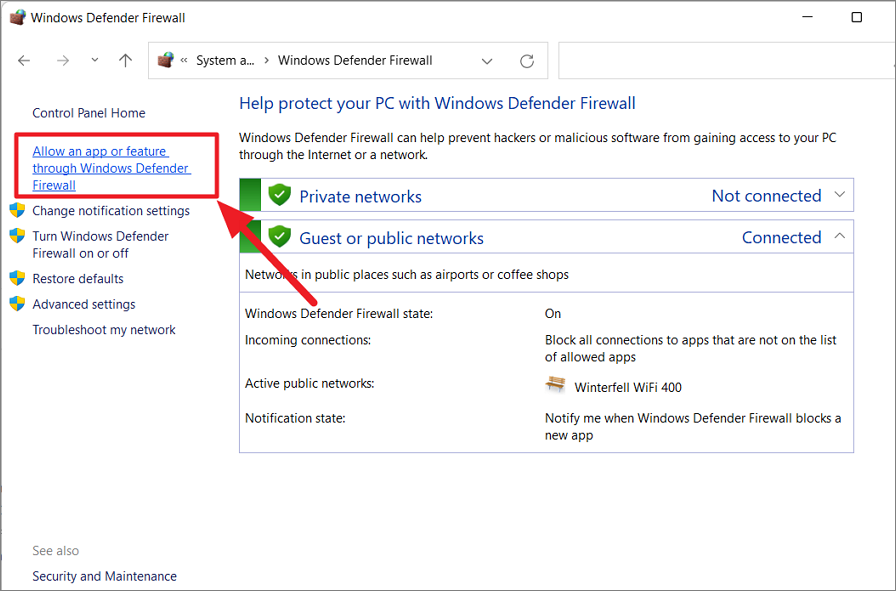
Step 3: Click on Change settings at the top. Scroll through the list of apps and locate Google Chrome. Ensure that both the Private and Public boxes are checked.
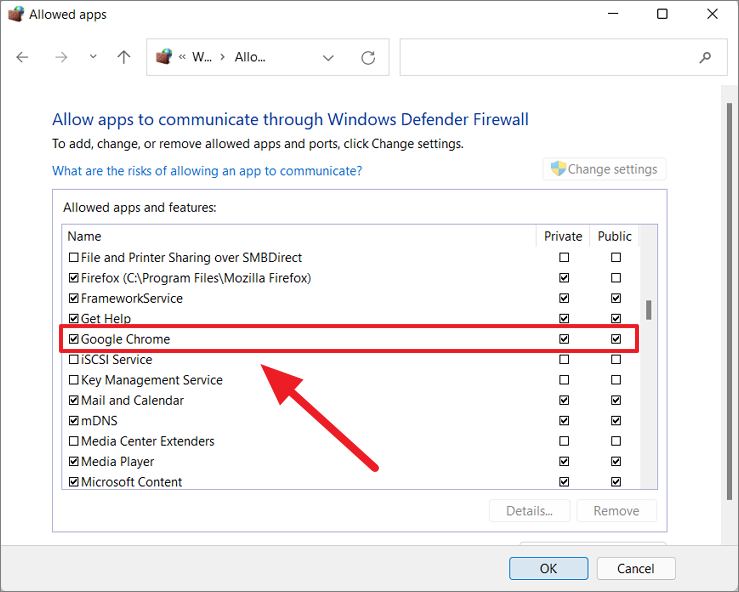
Step 4: If Chrome is not listed, click on Allow another app..., browse to the Chrome installation directory (usually C:\Program Files\Google\Chrome\Application\chrome.exe), select it, and add it to the list.

Step 5: Click on OK to save the changes. Restart Chrome to see if the issue is resolved.
Update Windows 11
Running the latest version of Windows 11 can ensure better compatibility and performance with applications like Chrome. Updating Windows can fix underlying system issues that might be affecting Chrome.
Step 1: Open Settings by pressing Windows + I. Click on Windows Update on the left sidebar.
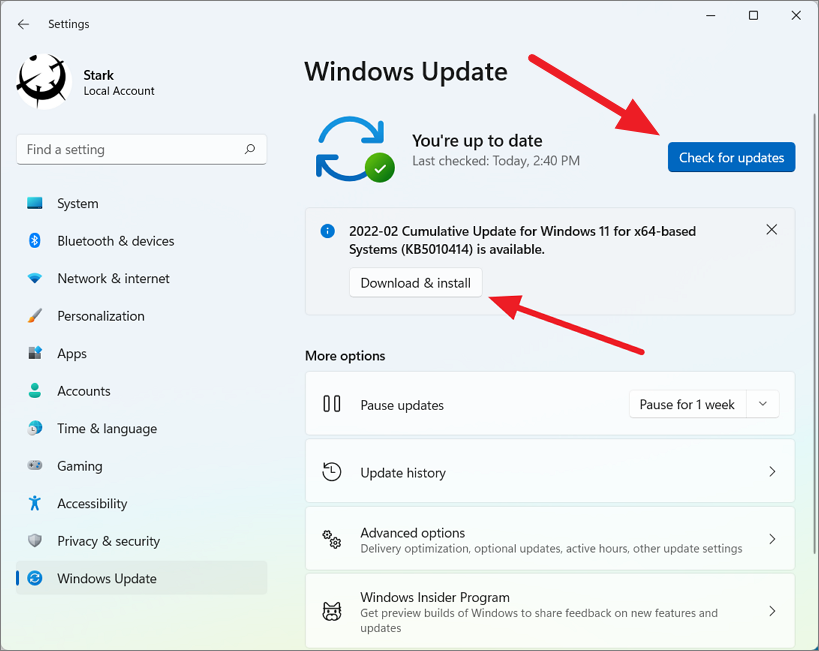
Step 2: Click on Check for updates. If updates are available, download and install them.
Step 3: After the updates are installed, restart your computer and check Chrome's performance.
Disable Hardware Acceleration in Chrome
Hardware acceleration allows Chrome to use your computer's GPU to render web pages faster. However, this feature can sometimes cause compatibility issues leading to browser crashes or freezes.
Step 1: Open Chrome and go to Settings by clicking on the three vertical dots.
Step 2: On the left sidebar, expand Advanced and select System.

Step 3: Toggle off the option Use hardware acceleration when available.
Step 4: Click on Relaunch to restart Chrome with the new settings applied.
Uninstall and Reinstall Google Chrome
If none of the above methods work, reinstalling Chrome may resolve deeper issues related to corrupted installation files.
Step 1: Open Settings by pressing Windows + I. Navigate to Apps and then select Apps & features.
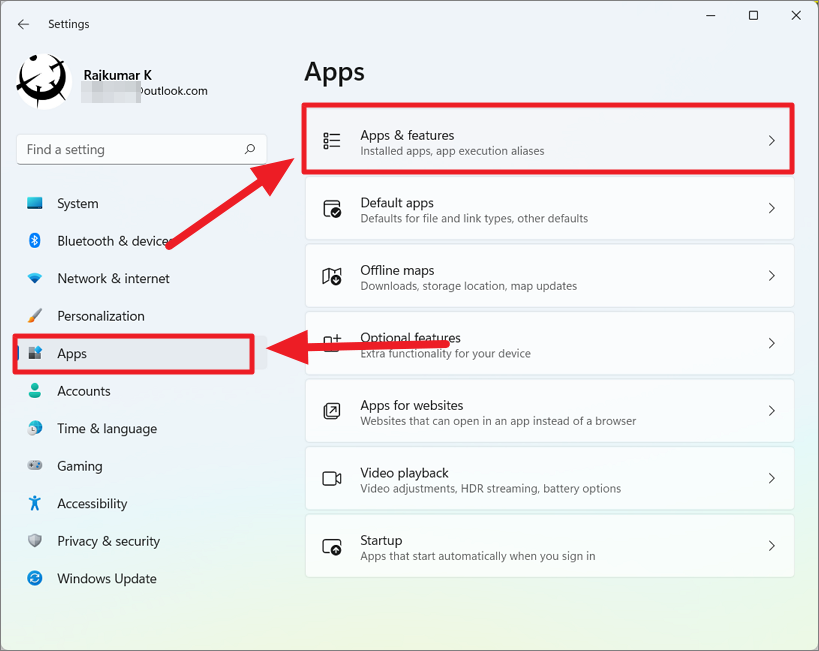
Step 2: Find Google Chrome in the list, click on the three vertical dots next to it, and select Uninstall. Confirm the uninstallation.
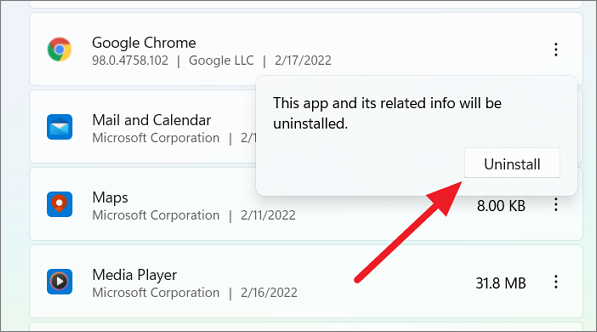
Step 3: After uninstalling, delete any leftover Chrome data. Open the Run dialog with Windows + R, type %LOCALAPPDATA%\Google\Chrome\User Data, and delete the User Data folder.
Step 4: Download the latest version of Chrome from the official website and install it.
Step 5: Launch Chrome and sign in with your Google account to restore your bookmarks and settings.
Experiencing Chrome not responding issues can be frustrating, but by following these methods, you can troubleshoot and resolve most common problems. Regular maintenance, such as keeping Chrome and Windows updated, can prevent many of these issues from occurring in the first place.

